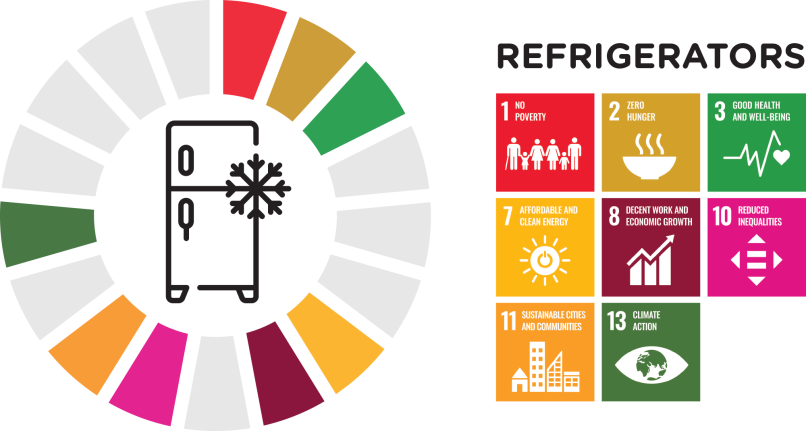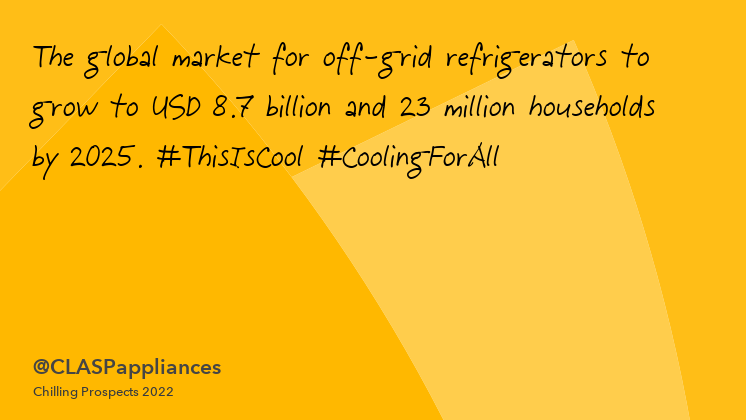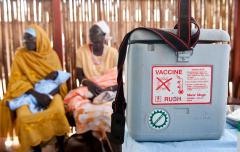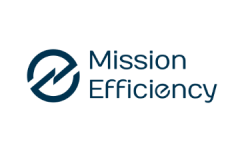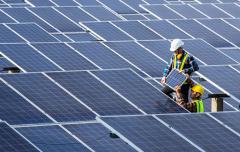Chilling Prospects 2022: Making sustainable, affordable refrigeration a reality for all
|
Reflections on five years of the Kigali Amendment by CLASP |
Refrigerators have the potential to unlock an array of social and economic benefits for consumers living in off- and weak-grid areas. They contribute to many of the Sustainable Development Goals (SDGs) (Figure 1), from promoting good health and wellbeing (SDG3) to reducing inequalities (SDG10) as the domestic burden of food gathering and preparation usually falls on women and children. Refrigeration is also essential in hospitals and clinics – especially for vaccine storage – and enables income-generating activities for small businesses through the storage and sale of drinks and perishable items.
Despite their potential impact and high demand [1], off-grid refrigerator sales and market penetration rates remain low. In 2020, it was estimated that only 4 percent of rural households in Sub-Saharan Africa owned a refrigerator. [2] This is largely due to affordability – without financing, the cost of refrigerators can be two and a half times higher than the annual disposable income of the poorest 50 percent of off-grid households. [3] Power system, duties/taxes, and transport are significant cost drivers, accounting for more than half of the total cost to the end user. [4]
Compared to smaller household appliances, refrigerators are energy intensive and thus need a larger solar energy system to power them. Solar systems can account for approximately 75 to 83 percent of the total cost of an inefficient refrigerator. [5] Efficiency improvements are therefore key to unlocking improved affordability by reducing the up-front cost of solar energy systems. Efficient off-grid refrigerators also help curb greenhouse gas (GHG) emissions. One unpublished analysis from CLASP found that replacing inefficient diesel-powered refrigerators in Nigeria with highly efficient solar models could avoid 625,507 tons of carbon dioxide (CO2) emissions, equivalent to taking 136,035 cars off the road for a year. [6]

